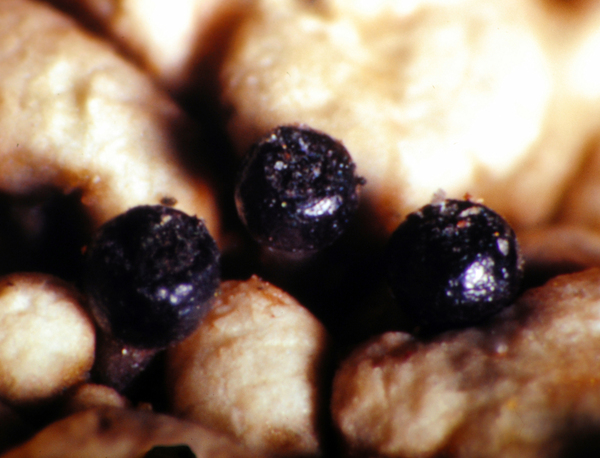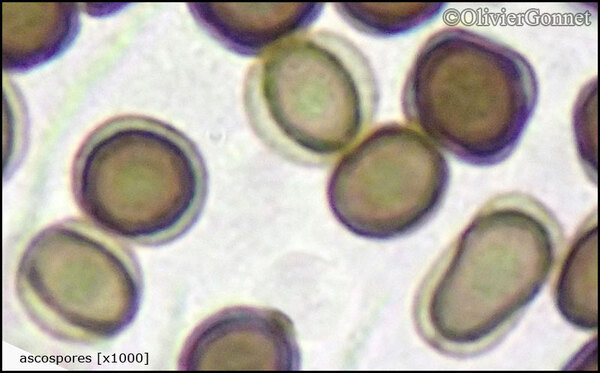Sphinctrina turbinata (Pers.) Fr.:Fr.
Elenchus Fungorum, 2: 148, 1828. Basionym: Calicium turbinatum Pers. - Tent. Disp. Fung.: 59, 1797
Synonyms: Acolium stigonellum (Ach.) Gray; Calicium stigonellum Ach.; Sphinctrina gelasinata (With.) Zahlbr. nom.inval.; Sphinctrina turbinata (Pers.) De Not.
Distribution: N - Ven (Nascimbene & Marini 2010, Brackel 2016), Lomb (Puntillo & Puntillo 2009, Brackel 2016), Piem (Puntillo & Puntillo 2009), Emil (Puntillo & Puntillo 2009, Brackel 2016), Lig (Watson 2014). C - Tosc (Puntillo & Puntillo 2009, Brackel 2016), Umb (Ravera & al. 2011, Brackel 2016), Laz (Ravera 2001, 2002, Massari & Ravera 2002, Brackel 2016), Abr (Nimis & Tretiach 1999, Puntillo & Puntillo 2009, Corona & al. 2016, Brackel 2016), Mol (Caporale & al. 2008, Brackel 2016, 2020), Sar (Rizzi & al. 2011, Cossu 2013, Brackel 2016, Brackel & Berger 2019, Di Nuzzo & al. 2022). S - Camp (Aprile & al. 2003b, Puntillo & Puntillo 2009, Garofalo & al. 2010, Brackel 2016, 2021), Pugl (Puntillo & Puntillo 2009, Brackel 2016), Bas (Potenza 2006, Puntillo & Puntillo 2009, Potenza & Fascetti 2012, Brackel 2016, Cassola & al. 2025), Cal (Puntillo 1994, 1995, 1996, Puntillo & Puntillo 2004, 2009, Brackel & Puntillo 2016, Brackel 2016), Si (Nimis & al. 1994, Grillo & Cristaudo 1995, Caniglia & Grillo 2006b, Puntillo & Puntillo 2009, Ottonello & al. 2011, Brackel 2016).
Description: Thallus not evident, not lichenized. Apothecia short-stalked to subsessile, 0.16-0.3 mm high. Stalk dark to pale brown, more rarely black, of periclinally arranged, red hyphae with strongly gelatinized walls, pale in inner part, reddish in outermost part, which is sometimes overlain by a thick gelatinous coat. Capitulum spherical to slightly irregular, 0.2-0.4 mm across, shiny black or dark brown; mazaedium well-developed, black. Exciple well-developed, dark ruby red in section, not sclerotized, consisting of more or less periclinally arranged hyphae, the surface slightly sclerotized in upper part, hyaline and gelatinose in lower part; hypothecium colourless to pale brown, 35-50 µm high. Asci 8-spored, cylindrical, formed singly from ascogenous hyphae with croziers, with a single, functional wall layer, K/I-, disintegrating at a rather late stage, with uniseriately arranged spores. Ascospores 1-celled, subglobose, dark brown, 5-7.5 x 4.5-7.5 µm, surrounded by a gelatinous coat, with an ornamentation of minute pores (resembling small warts under the optical microscope), and a few irregular cracks. Photobiont absent. Spot tests: K-, C-, KC-, P-, except the reddish parts of the ascomata, especially in the exciple, which react K+ purple. Chemistry: without lichen substances.Note: mostly on Pertusaria pertusa in humid beech forests, much more rarely on saxicolous Pertusaria-species. Widespread throughout the country, with optimum in the montane belt.
Growth form: Lichenicolous fungus
Substrata: bark
Reproductive strategy: mainly sexual
Most common in areas with a humid-warm climate (e.g. most of Tyrrenian Italy)
paras Pertusaria spp.
Commonnes-rarity: (info)
Alpine belt: absent
Subalpine belt: absent
Oromediterranean belt: absent
Montane belt: rather rare
Submediterranean belt: very rare
Padanian area: absent
Humid submediterranean belt: rare
Humid mediterranean belt: extremely rare
Dry mediterranean belt: absent
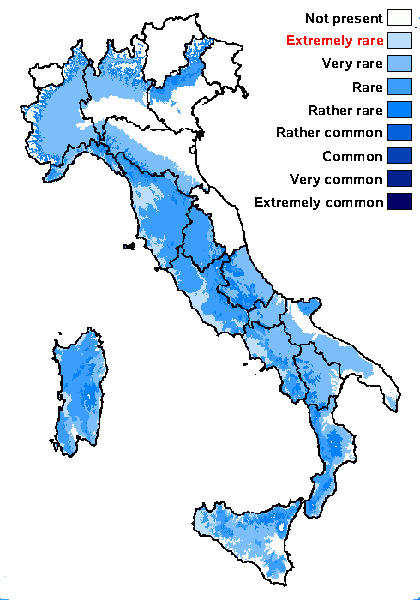
Predictive model
Herbarium samples
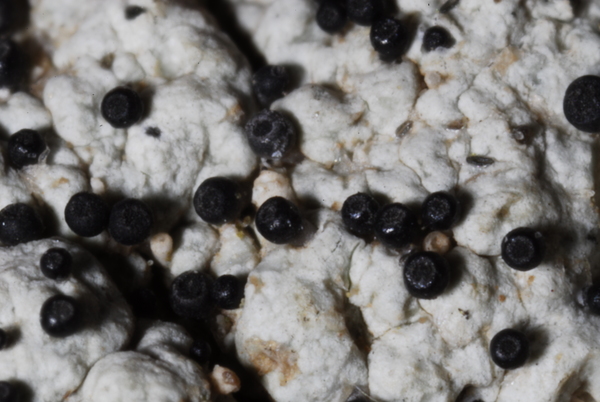

Domenico Puntillo - CC BY-SA 4.0
Italia. Calabria. Sila Piccola. Cocciolo (Cotronei, KC), m. 1108 leg. D. Puntillo 28/08/2021, su Quercus cerris, CLU Nr. 17979
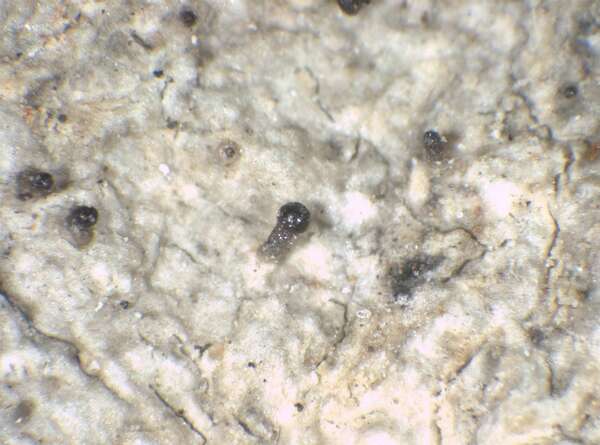

P.L. Nimis; Owner: Department of Life Sciences, University of Trieste
Herbarium: TSB (13077)
2003/03/17
on the thallus of the host, Pertusaria leioplaca
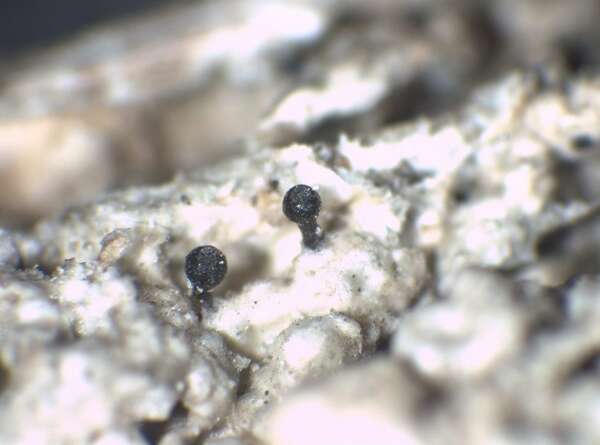

P.L. Nimis; Owner: Department of Life Sciences, University of Trieste
Herbarium: TSB (2855)
2003/03/17
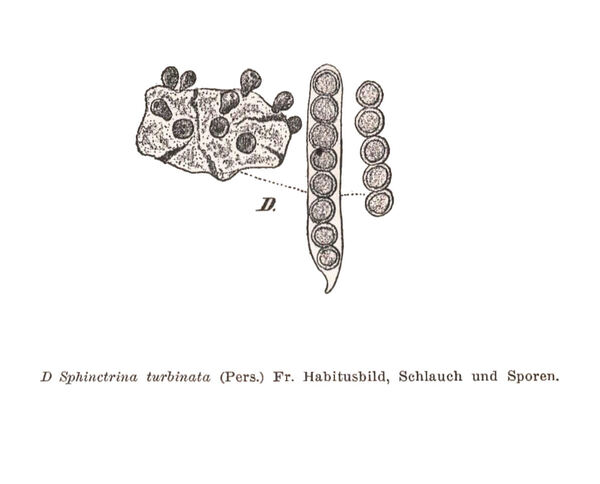
Zahlbruckner A. 1926. Lichenes (Flechten). In: Engler A. (ed.): Die natürlichen Pflanzenfamilien. 2nd ed., vol 8, W. Engelmann, Leipzig, 270 pp.
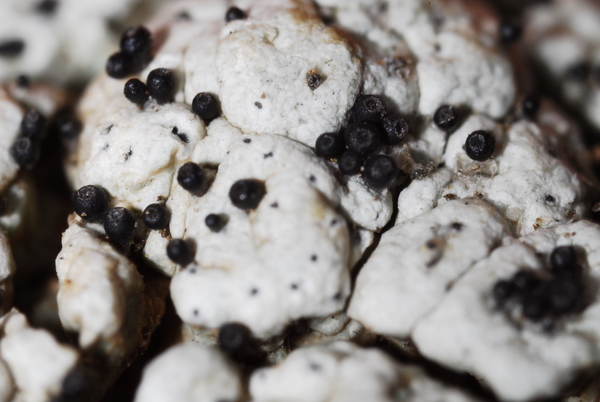

Domenico Puntillo - CC BY-SA 4.0
Italia. Calabria. Sila Piccola. Cocciolo (Cotronei, KC), m. 1108 leg. D. Puntillo 28/08/2021, su Quercus cerris, CLU Nr. 17979
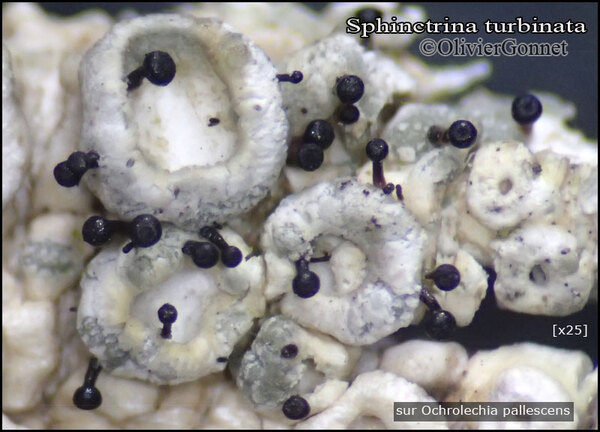
Courtesy Danièle et Olivier Gonnet - Source: https://www.afl-lichenologie.fr/Photos_AFL/Photos_AFL_S/Text_S2/Sphinctrina_turbinata.htm
France, 24/03/2014 - île de Cavallo, Bonifacio - Corse - (20) - dét. D. et O. Gonnet, confirmée par Alain Gardiennet le 14/06/2014
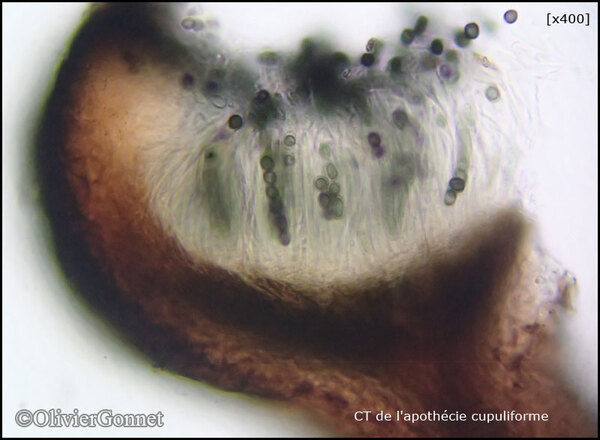
Courtesy Danièle et Olivier Gonnet - Source: https://www.afl-lichenologie.fr/Photos_AFL/Photos_AFL_S/Text_S2/Sphinctrina_turbinata.htm
France, 24/03/2014 - île de Cavallo, Bonifacio - Corse - (20) - dét. D. et O. Gonnet, confirmée par Alain Gardiennet le 14/06/2014
Growth form: Lichenicolous fungus
Substrata: bark
Reproductive strategy: mainly sexual
Most common in areas with a humid-warm climate (e.g. most of Tyrrenian Italy)
paras Pertusaria spp.
Commonnes-rarity: (info)
Alpine belt: absent
Subalpine belt: absent
Oromediterranean belt: absent
Montane belt: rather rare
Submediterranean belt: very rare
Padanian area: absent
Humid submediterranean belt: rare
Humid mediterranean belt: extremely rare
Dry mediterranean belt: absent

Predictive model
| Herbarium samples |


Domenico Puntillo - CC BY-SA 4.0
Italia. Calabria. Sila Piccola. Cocciolo (Cotronei, KC), m. 1108 leg. D. Puntillo 28/08/2021, su Quercus cerris, CLU Nr. 17979


P.L. Nimis; Owner: Department of Life Sciences, University of Trieste
Herbarium: TSB (13077)
2003/03/17
on the thallus of the host, Pertusaria leioplaca


P.L. Nimis; Owner: Department of Life Sciences, University of Trieste
Herbarium: TSB (2855)
2003/03/17

Zahlbruckner A. 1926. Lichenes (Flechten). In: Engler A. (ed.): Die natürlichen Pflanzenfamilien. 2nd ed., vol 8, W. Engelmann, Leipzig, 270 pp.


Domenico Puntillo - CC BY-SA 4.0
Italia. Calabria. Sila Piccola. Cocciolo (Cotronei, KC), m. 1108 leg. D. Puntillo 28/08/2021, su Quercus cerris, CLU Nr. 17979

Courtesy Danièle et Olivier Gonnet - Source: https://www.afl-lichenologie.fr/Photos_AFL/Photos_AFL_S/Text_S2/Sphinctrina_turbinata.htm
France, 24/03/2014 - île de Cavallo, Bonifacio - Corse - (20) - dét. D. et O. Gonnet, confirmée par Alain Gardiennet le 14/06/2014

 Index Fungorum
Index Fungorum
 GBIF
GBIF
